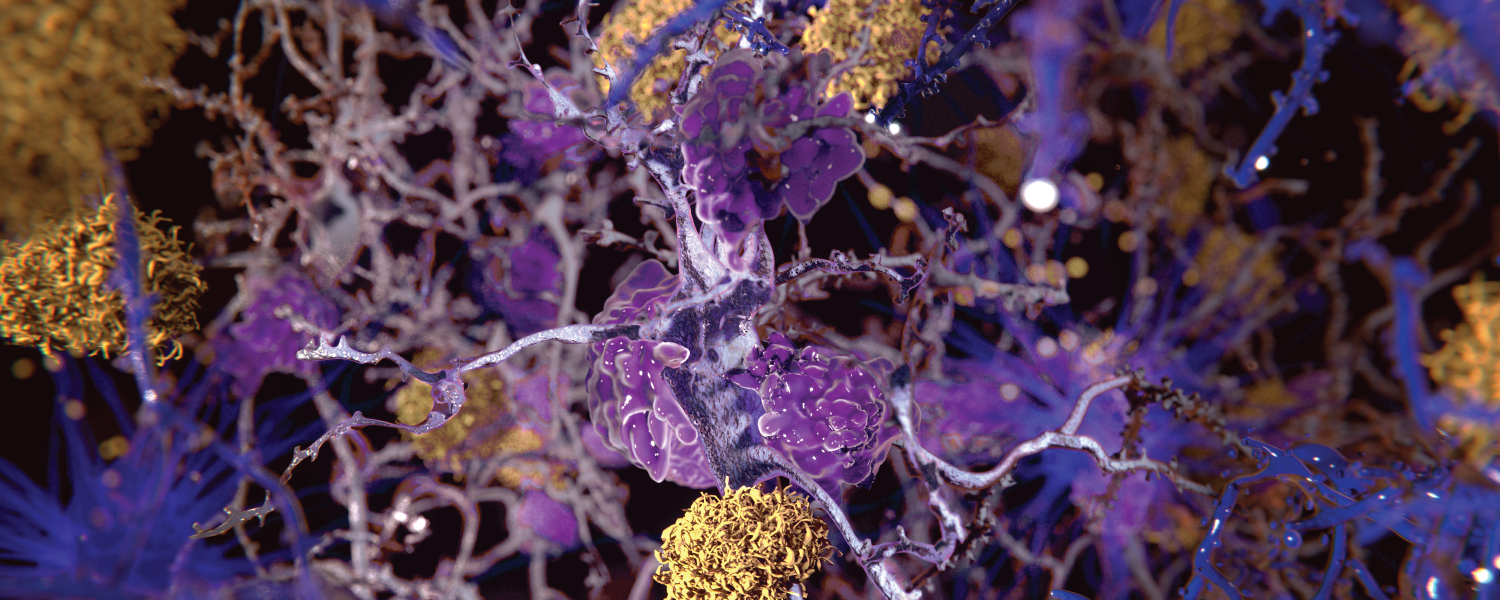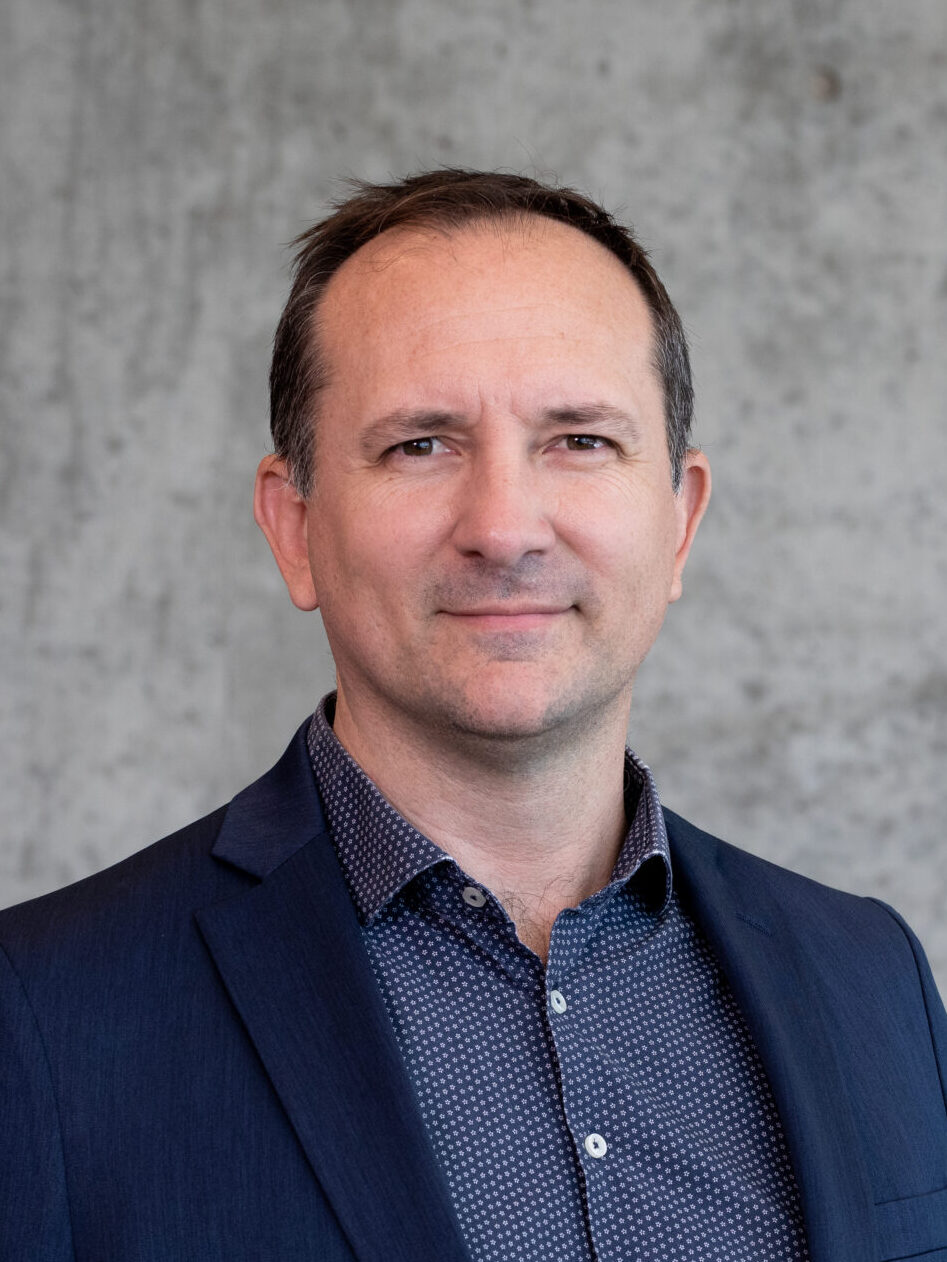Roybon Laboratory
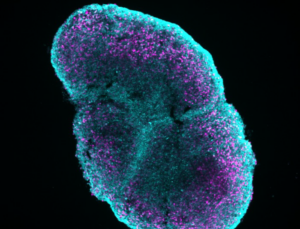
Patient-Based Models of Neurodegenerative Diseases
Age is one of the most important risk factors for many neurodegenerative disorders, including proteinopathies such as Parkinson’s. These diseases are marked by the aggregation of proteins in brain cells, which causes cells to sicken and die. Loss of these critical cells leads to disease symptoms. Currently, there are no approved ways to slow, stop or reverse this process.
The reasons underpinning the link between age and neurodegeneration are complex and not entirely understood. One of the major challenges to unraveling this association is developing methods to accurately model and study these nuanced diseases.
To this end, Roybon Laboratory develops robust induced pluripotent stem cell (iPSC)-based assays that enable new breakthroughs in neurodegenerative diseases, with the goal of informing new treatments. Using the Nobel Prize-winning methodology of Prof. Shinya Yamanaka to reprogram somatic cells into iPSCs, the Roybon Lab has developed several patient-specific models to interrogate the molecular mechanisms that drive disease in individuals.
Stem cells are biological “blank slates” that give rise to the specialized cell types needed to assemble and power the human body, from skin cells to heart cells and everything in between. One of their many important jobs is to maintain the body throughout life by replacing dead cells and rejuvenating damaged tissues.
iPSCs are cells derived from blood or skin cells that are “reprogrammed” in the lab to return to their earlier, undifferentiated state. From there, they can be coaxed to become other types of cells, making them powerful tools for scientists. For example, using iPSCs, scientists can generate living brain cells in the lab — allowing them to see first-hand the mechanisms underlying neurodegeneration.
The lab’s work dovetails with MiND Program’s iPSC Platform, which also is led by Dr. Roybon. This powerful platform fosters research across VAI by providing the technology and expertise to enable iPSC-based models in neurodegeneration and beyond.
OUR IMPACT
We’re raising thousands to save millions.
We’re turning hope into action for the millions of people around the world affected by diseases like cancer and Parkinson’s. Find out how you can help us make a difference.
- 121 peer-reviewed papers published in 2023
- 62 peer-reviewed papers published in high-impact journals in 2023
- 55 clinical trials launched to date
Laurent Roybon, Ph.D.
Associate Professor, Department of Neurodegenerative Science; Director, MiND iPSC Program
Areas of Expertise
Aging, neurodegenerative diseases, induced pluripotent stem cells, proteinopathies, mechanisms of neurodegeneration, patient-based models
Biography
Laurent Roybon, Ph.D., is a neurobiologist with strong expertise in CNS- and induced pluripotent stem cell (iPSC)-based assays to study diseases of the aging brain.
Laurent earned his B.S., M.S. and DEA in cellular and developmental biology from the Institute of Developmental Biology of Marseilles (IDBM) in France, and a Ph.D. in neurobiology from Lund University in Sweden (mentor: Dr. Jia-Yi Li). He completed postdoctoral fellowships in the labs of Dr. Patrik Brundin at Lund University, Drs. Christopher E. Henderson and Hynek Wichterle at Columbia University of New York, and Dr. Jenifer Estess of the Laboratory for Stem Cell Research, Project ALS, USA. In 2011, he returned to Lund University as assistant professor of neurobiology and group leader of the Stem Cell Laboratory for CNS disease modelling. He was promoted to associate professor in 2015.
In 2022, Dr. Roybon joined Van Andel Institute’s MiND Program as director of its new Induced Pluripotent Stem Cell (iPSC) Platform, which provides leading-edge technologies and expertise to empower breakthroughs in neurodegenerative diseases. He was appointed as associate professor in VAI’s Department of Neurodegenerative Science in 2023.
The Roybon Laboratory leverages iPSCs to design and develop new, much-needed models to study proteinopathies, including Parkinson’s disease, Alzheimer’s disease and amyotrophic lateral sclerosis. These critical tools enable detailed research into the mechanisms that drive neurodegeneration, thus creating new opportunities for therapeutic development.
Dr. Roybon has earned numerous accolades, including the Olav Thon International Research Award in Mathematics/Natural Sciences and Medicine, and Lund University’s Young Faculty MultiPark Award. While at Lund University, he received several grants from the Michael J. Fox Foundation for Parkinson’s Research, the European Joint Program for Neurodegeneration, the Swedish Research Council, the AFM Telethon France, and several Swedish private foundations.
Selected Publications
Ohtonen S, Giudice L, Jäntti H, Feroze Fazaludeen M, Shakirzyanova A, Gómez-Budia M, Välimäki N-N,Niskanen J, Korvenlaita N, Fagerlund I, Koistinaho J, Amiry-Moghaddam M, Savchenko E, Roybon L, Lehtonen S, Korhonen P, Malm T. 2023. Human iPSC-derived microglia carrying the LRRK2-G2019S mutation show a Parkinson’s disease related transcriptional profile and function. Sci Rep 13:22118.
Pomeshchik Y, Velasquez E, Gil J, Klementieva O, Gidlöf R, Sydoff M, Bagnoli S, Nacmias B, Sorbi S, Westergren-Thorsson G, Gouras GK, Rezeli M, Roybon L. In press. Proteomic analysis across patient iPSC-based models and human post-mortem hippocampal tissue reveals early cellular dysfunction and progression of Alzheimer’s disease pathogenesis. Acta Neuropathol Commun 11:50.
Pera EM, Nilsson-De Moura J, Pomeshchik Y, Roybon L, Milas I. In press. Inhibition of the serine protease HtrAI by SerpinE2 suggests a role for an extracellular proteolytic pathway in the control of a neural crest migration. eLife.
Marote A, Santos D, Mendes-Pinheiro B, Serre-Miranda C, Anjo SI, Vieira J, Ferreira-Antunes F, Correia JS, Borges-Pereira C, Pinho AG, Campos J, Manadas B, Teixeira MR, Correia-Neves M, Pinto L, Costa PM, Roybon L, Salgado AJ. 2023. Cellular aging secretes: A comparison of bone-marrow-derived and induced mesenchymal stem cells and their secretome over long-term culture. Stem Cell Rev Rep 19(1):248–263.
Azevedo C, Teku G, Pomeshchik Y, Reyes JF, Chumarina M, Russ K, Savchenko E, Hammarberg A, Lamas NJ, Collin A, Gouras GK, Klementieva O, Hallbeck M, Taipa R, Vihinen M, Roybon L. 2022. Parkinson’s disease and multiple system atrophy patient iPSC-derived oligodendrocytes exhibit alpha-synuclein-induced changes in maturation and immune reactive properties. Proc Natl Acad Sci USA 119(12):e2111405119.
Skauli N, Savchenko E, Ottersen OP, Roybon L, Amiry-Moghaddam M. 2022. Canonical bone morphogenetic protein signaling regulates expression of aquaporin-4 and its anchoring complex in mouse astrocytes. Front Cell Neurosci 16:878154.
Gustavsson N, Savchenko E, Klementieva O, Roybon L. 2021. The intracellular milieu of Parkinson’s disease patient brain cells modulates alpha-synuclein protein aggregation. Acta Neuropathol Commun 9(1):153.
Peteri UK, Pitkonen J, de Toma I, Nieminen O, Utami KH, Strandin TM, Corcoran P, Roybon L, Vaheri A, Ethell I, Casarotto P, Pouladi MA, Castrén ML. 2021. Urokinase plasminogen activator mediates changes in human astrocytes modeling Fragile X Syndrome. Glia 69(12):2947–2962.
Peteri UK, Pitkonen J, Utami KH, Paavola J, Roybon L, Pouladi MA, Castrén ML. 2021. Generation of the human pluripotent stem-cell-derived astrocyte model with forebrain identity. Brain Sci 11(2).
Pomeshchik Y, Klementieva O, Gil J, Martinsson I, Hansen MG, de Vries T, Sancho-Balsells A, Russ K, Savchenko E, Collin A, Vaz AR, Bagnoli S, Nacmias B, Rampon C, Sorbi S, Brites D, Marko-Varga G, Kokaia Z, Rezeli M, Gouras GK, Roybon L. 2021. Human iPSC-derived hippocampal spheroids: An innovative tool for stratifying Alzheimer disease patient-specific cellular phenotypes and developing therapies. Stem Cell Rep 16(11):2838.
Russ K, Teku G, Bousset L, Redeker V, Piel S, Savchenko E, Pomeshchik Y, Savistchenko J, Stummann TC, Azevedo C, Collin A, Goldwurm S, Fog K, Elmer E, Vihinen M, Melki R, Roybon L. 2021. TNF-α and α-synuclein fibrils differently regulate human astrocyte immune reactivity and impair mitochondrial respiration. Cell Rep 34(12):108895.
Azevedo C, Chumarina M, Serafimova E, Goldwurm S, Collin A, Roybon L, Savchenko E, Pomeshchik Y. 2020. Generation of an induced pluripotent stem cell line (CSC-32) from a patient with parkinson’s disease carrying a heterozygous variation p.A53t in the SNCA gene. Stem Cell Res 43:101694.
Brazdis RM, Alecu JE, Marsch D, Dahms A, Simmnacher K, Lörentz S, Brendler A, Schneider Y, Marxreiter F, Roybon L, Winner B, Xiang W, Prots I. 2020. Demonstration of brain region-specific neuronal vulnerability in human iPSC-based model of familial Parkinson’s disease. Hum Mol Genet 29(7):1180–1191.
Oksanen M, Hyötyläinen I, Trontti K, Rolova T, Wojciechowski S, Koskuvi M, Viitanen M, Levonen AL, Hovatta I, Roybon L, Lehtonen Š, Kanninen KM, Hämäläinen RH, Koistinaho J. 2020.NF-E2-related factor 2 activation boosts antioxidant defenses and ameliorates inflammatory and amyloid properties in human Presenilin-1 mutated Alzheimer’s disease astrocytes. Glia 68(3):589–599.
Pomeshchik Y, Klementieva O, Gil J, Martinsson I, Hansen MG, de Vries T, Sancho-Balsells A, Russ K, Savchenko E, Collin A, Vaz AR, Bagnoli S, Nacmias B, Rampon C, Sorbi S, Brites D, Marko-Varga G, Kokaia Z, Rezeli M, Gouras GK, Roybon L. 2020. Human iPSC-derived hippocampal spheroids: An innovative tool for stratifying Alzheimer disease patient-specific cellular phenotypes and developing therapies. Stem Cell Rep 15(1):256–273.
Simmnacher K, Krach F, Schneider Y, Alecu JE, Mautner L, Klein P, Roybon L, Prots I, Xiang W, Winner B. 2020. Unique signatures of stress-induced senescent human astrocytes. Exp Neurol 334:113466.
Bogetofte H, Jensen P, Ryding M, Schmidt SI, Okarmus J, Ritter L, Worm CS, Hohnholt MC, Azevedo C, Roybon L, Bak LK, Waagepetersen H, Ryan BJ, Wade-Martins R, Larsen MR, Meyer M. 2019. PARK2 mutation causes metabolic disturbances and impaired survival of human iPSC-derived neurons. Front Cell Neurosci 13:297.
Chumarina M, Russ K, Azevedo C, Heuer A, Pihl M, Collin A, Frostner E, Elmer E, Hyttel P, Cappelletti G, Zini M, Goldwurm S, Roybon L. 2019. Cellular alterations identified in pluripotent stem cell-derived midbrain spheroids generated from a female patient with progressive external ophthalmoplegia and parkinsonism who carries a novel variation (p.Q811r) in the POLG1 gene. Acta Neuropathol Commun 7(1):208.
Gustavsson N, Marote A, Pomeshchik Y, Russ K, Azevedo C, Chumarina M, Goldwurm S, Collin A, Pinto L, Salgado AJ, Klementieva O, Roybon L, Savchenko E. 2019. Generation of an induced pluripotent stem cell line (CSC-46) from a patient with Parkinson’s disease carrying a novel p.R301c mutation in the GBA gene. Stem Cell Res 34:101373.
Savchenko E, Teku GN, Boza-Serrano A, Russ K, Berns M, Deierborg T, Lamas NJ, Wichterle H, Rothstein J, Henderson CE, Vihinen M, Roybon L. 2019. FGF family members differentially regulate maturation and proliferation of stem cell-derived astrocytes. Sci Rep 9(1):9610.
Cartelli D, Amadeo A, Calogero AM, Casagrande FVM, De Gregorio C, Gioria M, Kuzumaki N, Costa I, Sassone J, Ciammola A, Hattori N, Okano H, Goldwurm S, Roybon L, Pezzoli G, Cappelletti G. 2018. Parkin absence accelerates microtubule aging in dopaminergic neurons. Neurobiol Aging 61:66–74.
Marote A, Pomeshchik Y, Collin A, Goldwurm S, Lamas NJ, Pinto L, Salgado AJ, Roybon L. 2018. Generation of an induced pluripotent stem cell line (CSC-41) from a Parkinson’s disease patient carrying a p.G2019s mutation in the LRRK2 gene. Stem Cell Res 28:44–47.
Marote A, Pomeshchik Y, Goldwurm S, Collin A, Lamas NJ, Pinto L, Salgado AJ, Roybon L. 2018. Generation of an induced pluripotent stem cell line (CSC-44) from a Parkinson’s disease patient carrying a compound heterozygous mutation (c.823c>t and EX6 del) in the PARK2 gene. Stem Cell Res 27:90–94.
Marote A, Pomeshchik Y, Goldwurm S, Collin A, Lamas NJ, Pinto L, Salgado AJ, Roybon L. 2018. Generation of an integration-free induced pluripotent stem cell line (CSC-43) from a patient with sporadic Parkinson’s disease. Stem Cell Res 27:82–85.
Russ K, Marote A, Savchenko E, Collin A, Goldwurm S, Pomeshchik Y, Roybon L. 2018. Generation of a human induced pluripotent stem cell line (CSC-40) from a Parkinson’s disease patient with a PINK1 p.Q456x mutation. Stem Cell Res 27:61–64.
Savchenko E, Marote A, Russ K, Collin A, Goldwurm S, Roybon L, Pomeshchik Y. 2018. Generation of a human induced pluripotent stem cell line (CSC-42) from a patient with sporadic form of Parkinson’s disease. Stem Cell Res 27:78–81.
Siebzehnrübl FA, Raber KA, Urbach YK, Schulze-Krebs A, Canneva F, Moceri S, Habermeyer J, Achoui D, Gupta B, Steindler DA, Stephan M, Nguyen HP, Bonin M, Riess O, Bauer A, Aigner L, Couillard-Despres S, Paucar MA, Svenningsson P, Osmand A, Andreew A, Zabel C, Weiss A, Kuhn R, Moussaoui S, Blockx I, Van der Linden A, Cheong RY, Roybon L, Petersén Å, von Hörsten S. 2018. Early postnatal behavioral, cellular, and molecular changes in models of Huntington disease are reversible by HDAC inhibition. Proc Natl Acad Sci U S A 115(37):E8765–E8774.
Achuta VS, Grym H, Putkonen N, Louhivuori V, Kärkkäinen V, Koistinaho J, Roybon L, Castrén ML. 2017. Metabotropic glutamate receptor 5 responses dictate differentiation of neural progenitors to nmda-responsive cells in fragile X syndrome. Dev Neurobiol 77(4):438–453.
Chumarina M, Azevedo C, Bigarreau J, Vignon C, Kim KS, Li JY, Roybon L. 2017. Derivation of mouse embryonic stem cell lines from tyrosine hydroxylase reporter mice crossed with a human SNCA transgenic mouse model of Parkinson’s disease. Stem Cell Res 19:17–20.
Djelloul M, Azevedo C, Pomeshchik Y, Hammarberg A, Roybon L. 2017. Reporting on methods to generate and purify rodent and human oligodendrocytes from different sources. Stem Cell Res 20:58–66.
Petsophonsakul P, Richetin K, Andraini T, Roybon L, Rampon C. 2017. Memory formation orchestrates the wiring of adult-born hippocampal neurons into brain circuits. Brain Struct Funct 222(6):2585–2601.
Richetin K, Moulis M, Millet A, Arràzola MS, Andraini T, Hua J, Davezac N, Roybon L, Belenguer P, Miquel MC, Rampon C. 2017. Amplifying mitochondrial function rescues adult neurogenesis in a mouse model of Alzheimer’s disease. Neurobiol Dis 102:113–124.
Richetin K, Petsophonsakul P, Roybon L, Guiard BP, Rampon C. 2017. Differential alteration of hippocampal function and plasticity in females and males of the APPxPS1 mouse model of Alzheimer’s disease. Neurobiol Aging 57:220–231.
Rostami J, Holmqvist S, Lindström V, Sigvardson J, Westermark GT, Ingelsson M, Bergström J, Roybon L, Erlandsson A. 2017. Human astrocytes transfer aggregated alpha-synuclein via tunneling nanotubes. J Neurosci 37(49):11835–11853.
Cartelli D, Aliverti A, Barbiroli A, Santambrogio C, Ragg EM, Casagrande FV, Cantele F, Beltramone S, Marangon J, De Gregorio C, Pandini V, Emanuele M, Chieregatti E, Pieraccini S, Holmqvist S, Bubacco L, Roybon L, Pezzoli G, Grandori R, Arnal I, Cappelletti G. 2016. Α-synuclein is a novel microtubule dynamase. Sci Rep 6:33289.
Holmqvist S, Lehtonen Š, Chumarina M, Puttonen KA, Azevedo C, Lebedeva O, Ruponen M, Oksanen M, Djelloul M, Collin A, Goldwurm S, Meyer M, Lagarkova M, Kiselev S, Koistinaho J, Roybon L. 2016. Creation of a library of induced pluripotent stem cells from parkinsonian patients. npj Parkinsons Dis 2:16009.
Zalis MC, Reyes JF, Augustsson P, Holmqvist S, Roybon L, Laurell T, Deierborg T. 2016. Label-free concentration of viable neurons, hESCs and cancer cells by means of acoustophoresis. Integr Biol (Camb) 8(3):332–340.
Djelloul M, Holmqvist S, Boza-Serrano A, Azevedo C, Yeung MS, Goldwurm S, Frisén J, Deierborg T, Roybon L. 2015. Alpha-synuclein expression in the oligodendrocyte lineage: An in vitro and in vivo study using rodent and human models. Stem Cell Rep 5(2):174–184.
Holmqvist S, Brouwer M, Djelloul M, Diaz AG, Devine MJ, Hammarberg A, Fog K, Kunath T, Roybon L. 2015. Generation of human pluripotent stem cell reporter lines for the isolation of and reporting on astrocytes generated from ventral midbrain and ventral spinal cord neural progenitors. Stem Cell Res 15(1):203–220.
Richetin K, Leclerc C, Toni N, Gallopin T, Pech S, Roybon L, Rampon C. 2015. Genetic manipulation of adult-born hippocampal neurons rescues memory in a mouse model of Alzheimer’s disease. Brain. 138(Pt 2):440–455.
Roybon L, Mastracci TL, Li J, Stott SR, Leiter AB, Sussel L, Brundin P, Li JY. 2015. The origin, development and molecular diversity of rodent olfactory bulb glutamatergic neurons distinguished by expression of transcription factor NeuroD1. PLoS One 10(6):e0128035.
Haidet-Phillips AM, Roybon L, Gross SK, Tuteja A, Donnelly CJ, Richard JP, Ko M, Sherman A, Eggan K, Henderson CE, Maragakis NJ. 2014. Gene profiling of human induced pluripotent stem cell-derived astrocyte progenitors following spinal cord engraftment. Stem Cells Transl Med 3(5):575–585.
Holmqvist S, Chutna O, Bousset L, Aldrin-Kirk P, Li W, Björklund T, Wang ZY, Roybon L, Melki R, Li JY. 2014. Direct evidence of Parkinson pathology spread from the gastrointestinal tract to the brain in rats. Acta Neuropathol 128(6):805–820.
Lamas NJ, Johnson-Kerner B, Roybon L, Kim YA, Garcia-Diaz A, Wichterle H, Henderson CE. 2014. Neurotrophic requirements of human motor neurons defined using amplified and purified stem cell-derived cultures. PLoS One 9(10):e110324.
Amoroso MW, Croft GF, Williams DJ, O’Keeffe S, Carrasco MA, Davis AR, Roybon L, Oakley DH, Maniatis T, Henderson CE, Wichterle H. 2013. Accelerated high-yield generation of limb-innervating motor neurons from human stem cells. J Neurosci 33(2):574–586.
Krezymon A, Richetin K, Halley H, Roybon L, Lassalle JM, Francès B, Verret L, Rampon C. 2013. Modifications of hippocampal circuits and early disruption of adult neurogenesis in the TG2576 mouse model of Alzheimer’s disease. PLoS One 8(9):e76497.
Roybon L, Lamas NJ, Garcia AD, Yang EJ, Sattler R, Lewis VJ, Kim YA, Kachel CA, Rothstein JD, Przedborski S, Wichterle H, Henderson CE. 2013.. Human stem cell-derived spinal cord astrocytes with defined mature or reactive phenotypes. Cell Rep. 4(5):1035–1048.
Zhang H, Petit GH, Gaughwin PM, Hansen C, Ranganathan S, Zuo X, Smith R, Roybon L, Brundin P, Mobley WC, Li JY. 2013. NGF rescues hippocampal cholinergic neuronal markers, restores neurogenesis, and improves the spatial working memory in a mouse model of Huntington’s disease. J Huntingtons Dis 2(1):69–82.
Paul G, Özen I, Christophersen NS, Reinbothe T, Bengzon J, Visse E, Jansson K, Dannaeus K, Henriques-Oliveira C, Roybon L, Anisimov SV, Renström E, Svensson M, Haegerstrand A, Brundin P. 2012. The adult human brain harbors multipotent perivascular mesenchymal stem cells. PLoS One 7(4):e35577.
Fedele V, Roybon L, Nordström U, Li JY, Brundin P. 2011. Neurogenesis in the R6/2 mouse model of huntington’s disease is impaired at the level of NeuroD1. Neuroscience 173:76–81.
Deierborg T, Roybon L, Inacio AR, Pesic J, Brundin P. 2010. Brain injury activates microglia that induce neural stem cell proliferation ex vivo and promotes differentiation of neurosphere-derived cells into neurons and oligodendrocytes. Neuroscience 171(4):1386–1396.
Roybon L, Mastracci TL, Ribeiro D, Sussel L, Brundin P, Li JY. 2010. Gabaergic differentiation induced by Mash1 is compromised by the bHLH proteins Neurogenin2, Neurod1, and Neurod2. Cereb Cortex 20(5):1234–1244.
Bexell D, Gunnarsson S, Tormin A, Darabi A, Gisselsson D, Roybon L, Scheding S, Bengzon J. 2009. Bone marrow multipotent mesenchymal stroma cells act as pericyte-like migratory vehicles in experimental gliomas. Mol Ther 17(1):183–190.
Deierborg T, Staflin K, Pesic J, Roybon L, Brundin P, Lundberg C. 2009. Absence of striatal newborn neurons with mature phenotype following defined striatal and cortical excitotoxic brain injuries. Exp Neurol 219(1):363–367.
Roybon L, Deierborg T, Brundin P, Li JY. 2009. Involvement of Ngn2, Tbr and NeuroD proteins during postnatal olfactory bulb neurogenesis. Eur J Neurosci 29(2):232–243.
Roybon L, Hjalt T, Stott S, Guillemot F, Li JY, Brundin P. 2009. Neurogenin2 directs granule neuroblast production and amplification while NeuroD1 specifies neuronal fate during hippocampal neurogenesis. PLoS One 4(3):e4779.
Deierborg T, Soulet D, Roybon L, Hall V, Brundin P. 2008. Emerging restorative treatments for Parkinson’s disease. Prog Neurobiol 85(4):407–432.
Roybon L, Hjalt T, Christophersen NS, Li JY, Brundin P. 2008. Effects on differentiation of embryonic ventral midbrain progenitors by Lmx1a, Msx1, Ngn2, and Pitx3. J Neurosci 28(14):3644–3656.
Correia AS, Anisimov SV, Roybon L, Li JY, Brundin P. 2007. Fibroblast growth factor-20 increases the yield of midbrain dopaminergic neurons derived from human embryonic stem cells. Front Neuroanat 1:4.
Roybon L, Ma Z, Asztely F, Fosum A, Jacobsen SE, Brundin P, Li JY. 2006. Failure of transdifferentiation of adult hematopoietic stem cells into neurons. Stem Cells 24(6):1594–1604.
Brederlau A, Correia AS, Anisimov SV, Elmi M, Paul G, Roybon L, Morizane A, Bergquist F, Riebe I, Nannmark U, Carta M, Hanse E, Takahashi J, Sasai Y, Funa K, Brundin P, Eriksson PS, Li JY. 2006. Transplantation of human embryonic stem cell-derived cells to a rat model of Parkinson’s disease: Effect of in vitro differentiation on graft survival and teratoma formation. Stem Cells. 24(6):1433–1440.
Roybon L, Brundin P, Li JY. 2005. Stromal cell-derived inducing activity does not promote dopaminergic differentiation, but enhances differentiation and proliferation of neural stem cell-derived astrocytes. Exp Neurol 196(2):373–380.
Roybon L, Christophersen NS, Brundin P, Li JY. 2004. Stem cell therapy for Parkinson’s disease: Where do we stand? Cell Tissue Res 318(1):261–273.
Donadio S, Dubois C, Fichant G, Roybon L, Guillemot JC, Breton C, Ronin C. 2003. Recognition of cell surface acceptors by two human alpha-2,6-sialyltransferases produced in CHO cells. Biochimie 85(3-4):311–321.
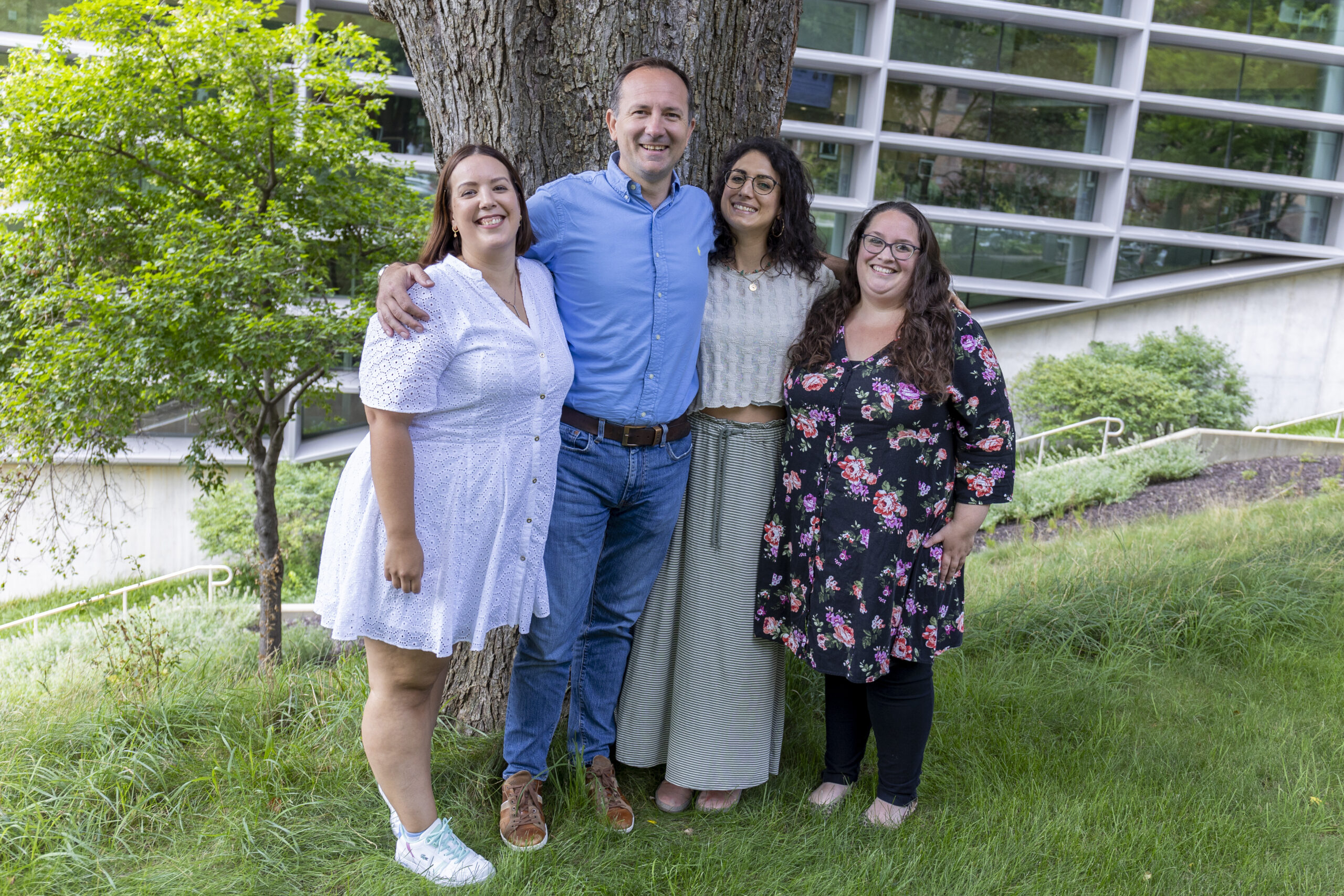
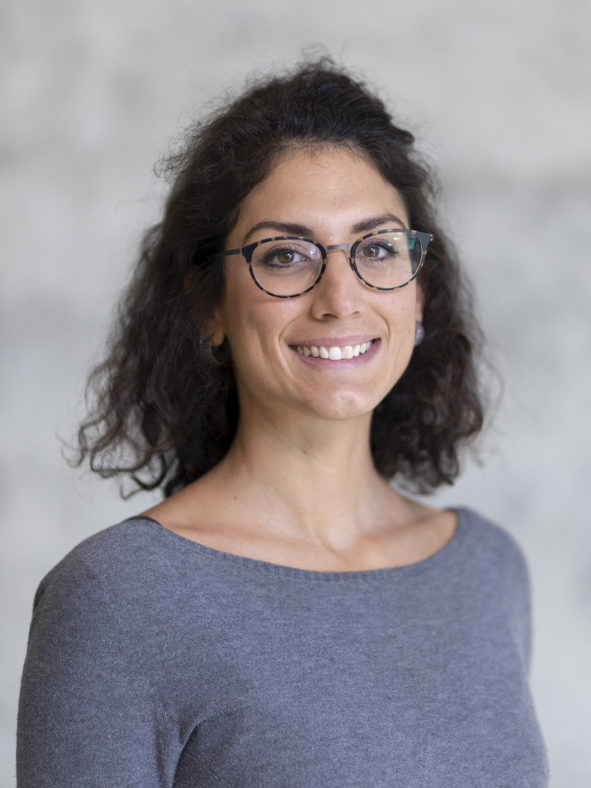
Arianna Colini Baldeschi, Ph.D.
Postdoctoral Fellow, Roybon Laboratory

Jamie Durst, B.S.
Senior Administrative Assistant I, Department of Neurodegenerative Science
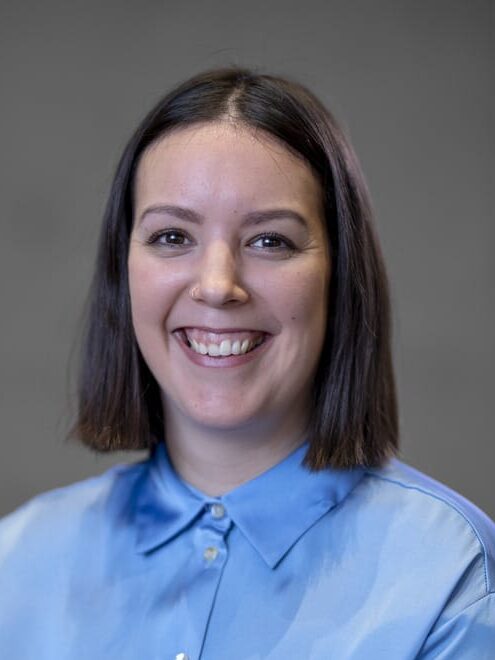
Estibaliz Santiago-Mujika, Ph.D.
Postdoctoral Fellow, Roybon Laboratory
MiND iPSC Platform

Gabriel Simms
Assistant Research Technician, Department of Neurodegenerative Science
